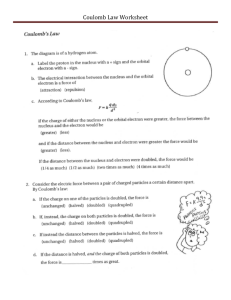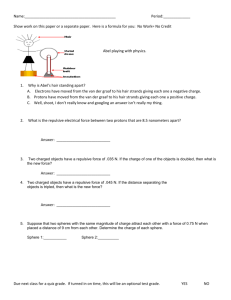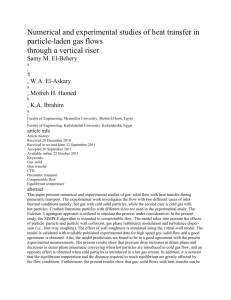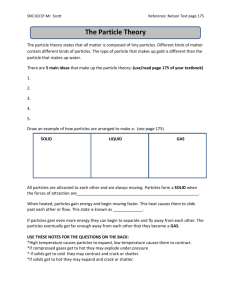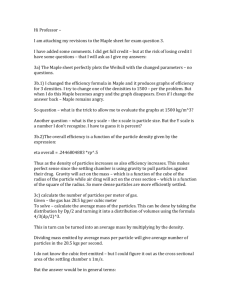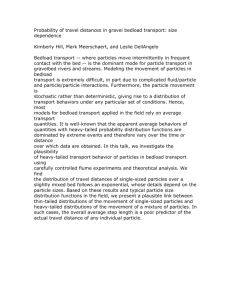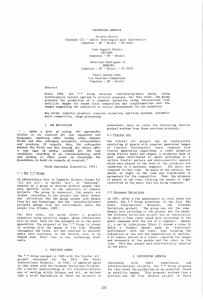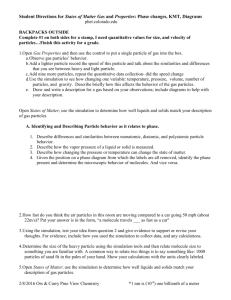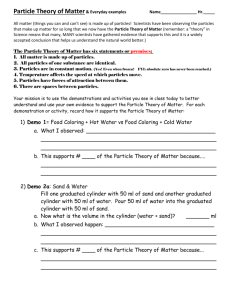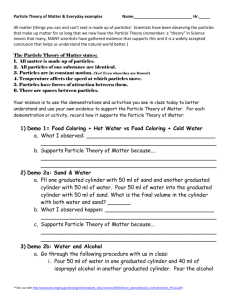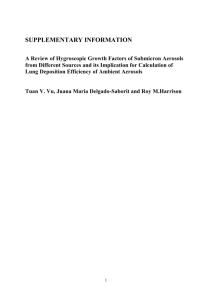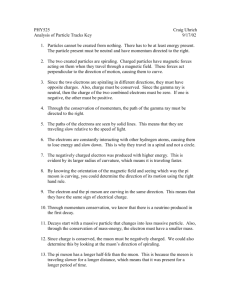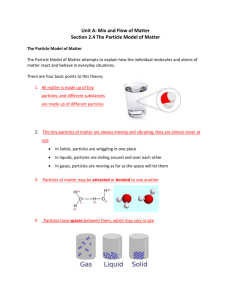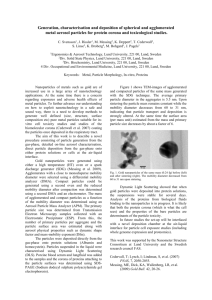Word
advertisement
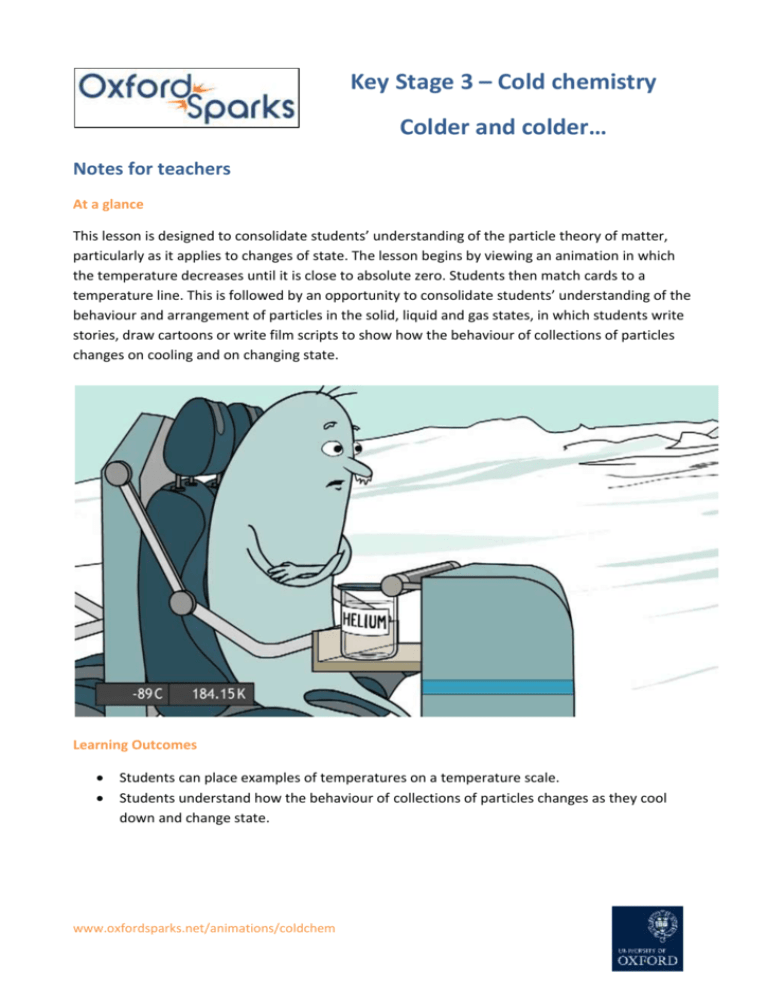
Key Stage 3 – Cold chemistry Colder and colder… Notes for teachers At a glance This lesson is designed to consolidate students’ understanding of the particle theory of matter, particularly as it applies to changes of state. The lesson begins by viewing an animation in which the temperature decreases until it is close to absolute zero. Students then match cards to a temperature line. This is followed by an opportunity to consolidate students’ understanding of the behaviour and arrangement of particles in the solid, liquid and gas states, in which students write stories, draw cartoons or write film scripts to show how the behaviour of collections of particles changes on cooling and on changing state. Learning Outcomes Students can place examples of temperatures on a temperature scale. Students understand how the behaviour of collections of particles changes as they cool down and change state. www.oxfordsparks.net/animations/coldchem Possible Lesson Activities 1. Starter activity Show the animation ‘Towards absolute zero’ to the class. Divide the class into groups and give them Student worksheet 1 (enlarged to A3) and cards made from Student worksheet 2. Ask students to match the temperature cards to the picture cards. Two cards of each type are blank for students or teacher to add temperatures of their choice. Students then stick both to the appropriate place on the temperature line. Students then answer the questions on Student worksheet 1. Large versions of the cards are also supplied. If you wish, give one card to each student, and ask them to get into pairs so that the correct temperature is matched to the correct picture. Students representing each pair then stand in line, in order of increasing temperature, across the front of the classroom. Answers: Hottest temperature recorded on Earth = 58 °C Hottest temperature in the UK = 38 °C Typical freezer temperature = −18 °C Melting point of ice = 0 °C Temperature of the Moon during the day = 107 °C Temperature of the Moon at night = −153 °C Body temperature of a chicken = 42 °C Boiling point of water = 100 °C Body temperature of a human = 37 °C Coldest temperature recorded on Earth = −89 °C Body temperature of a camel = 35 – 41 °C (the camel’s body temperature varies according to the amount of water available and the time. When a camel drinks each day, its body temperature rises from 36.5 °C in the morning to 39.5 °C at night. If the camel does not drink regularly, the temperature range is 34.5 °C to 41 °C Typical fridge temperature = 4 °C 2. Main activity: What happens when substance gets colder? Show pupils water as a gas, liquid and solid and explain that they will be asked to try to see things from the point of view of one particle. They can do this by writing a story, or drawing a cartoon, or writing a film script of the story of a particle. At first, the particle is part of a gas. It then cools and becomes part of a collection of particles in the liquid state. Finally, it cools further, and becomes part of a collection of particles in the solid state. Extension: Show students the animation again and get them to add a final scene, cartoon, or paragraph that imagines life as a particle at absolute zero. 3. Plenary Pupils read stories, show cartoons or act out their scripts. www.oxfordsparks.net/animations/coldchem




